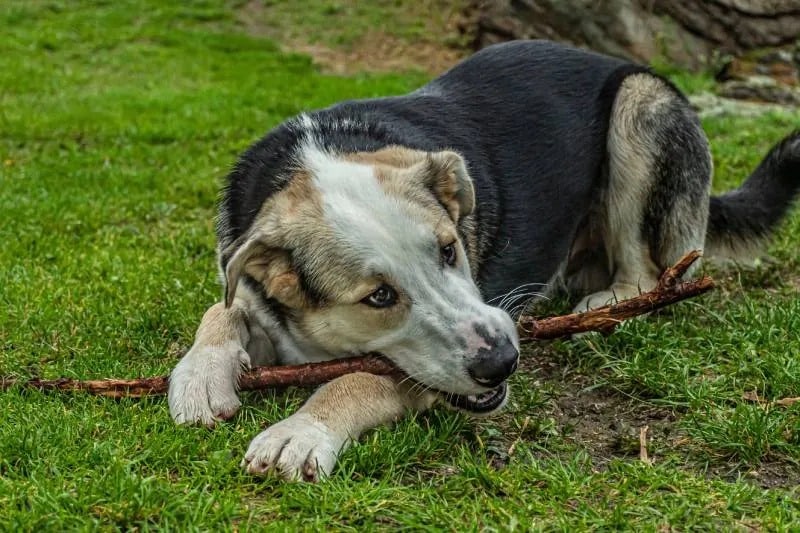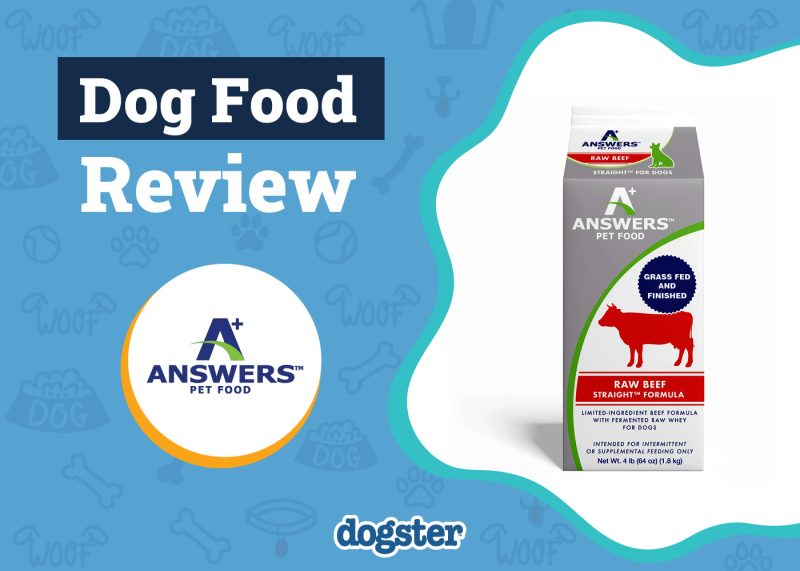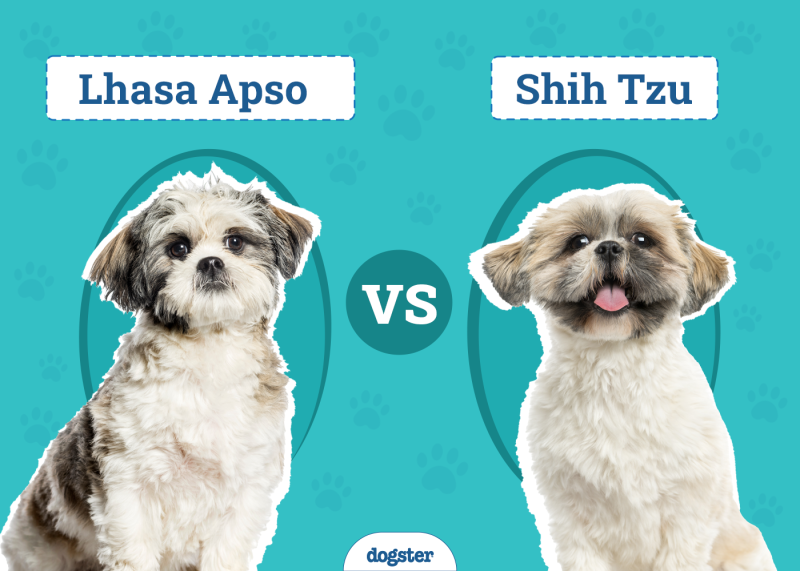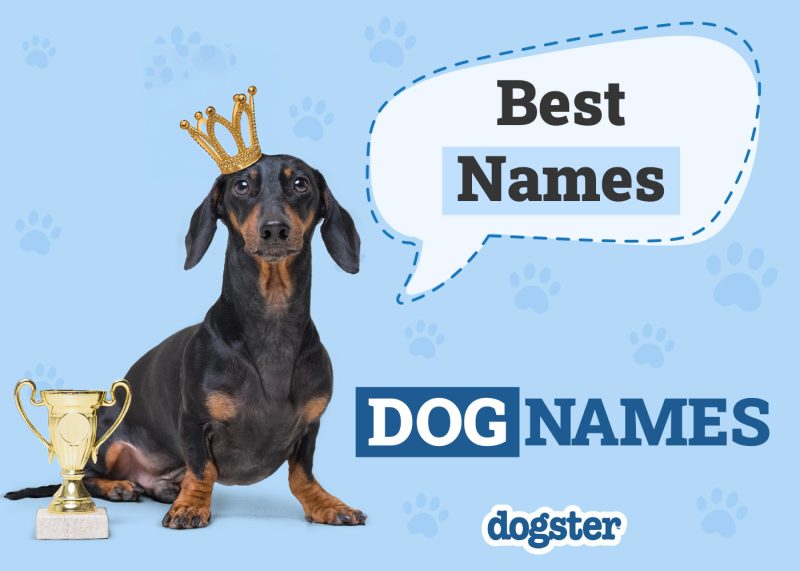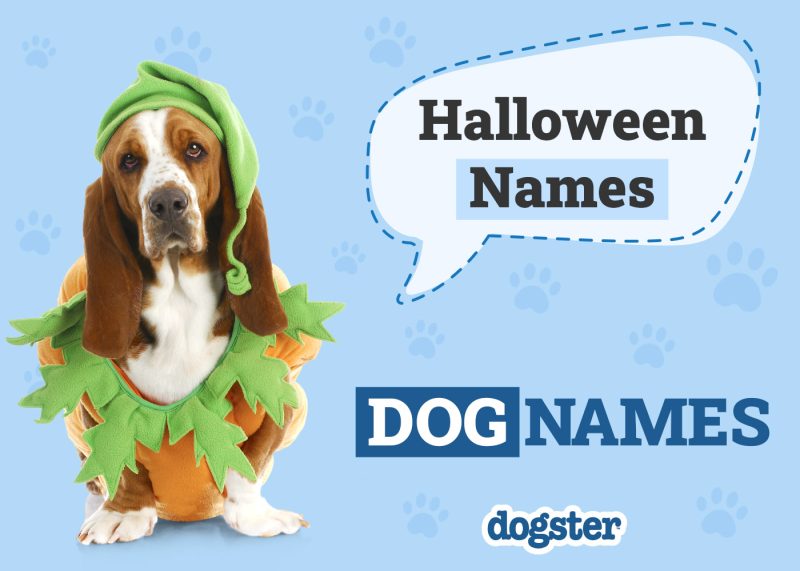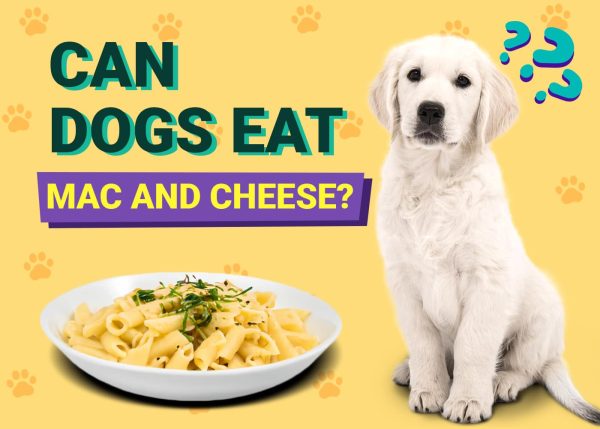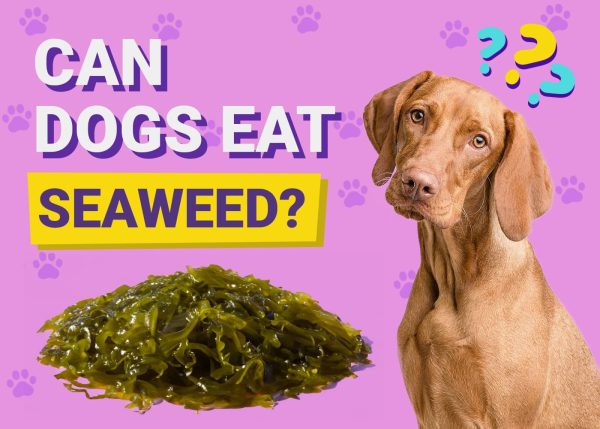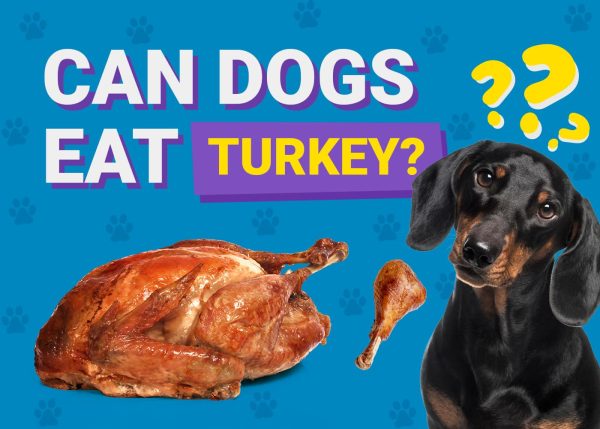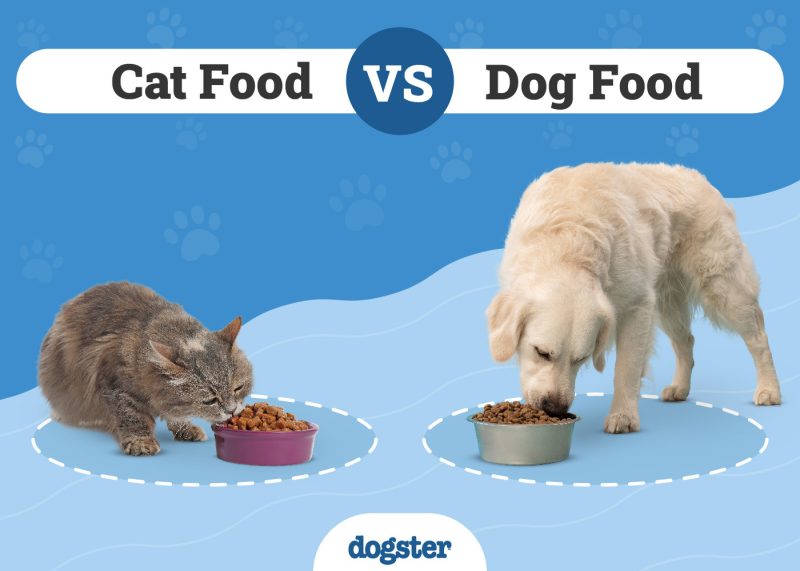Dogs seem to have some sort of obsession with sticks; they play with them, carry them around, fetch them, chew them, and might eat bits of them. Chewing on sticks seems pretty normal. Sticks are multi-sensory with their woody taste and bumpy texture, which may also be a drawcard for your dog. But why do dogs eat sticks? Is that normal?
Most dogs will not purposefully eat sticks. Dogs may ingest bits of a stick they have chewed, but they will not consider a stick as a food source. However, if you notice your dog eating sticks regularly, there could be an underlying health issue.

Why Do Dogs Eat Sticks?
In general, healthy dogs usually do not seek out sticks specifically to eat them. Dogs will chew on a stick and may ingest the pieces they have in their mouth, especially if they like the taste.
But why do dogs chew sticks? If you have a puppy, you may have noticed that all they seem to do all day is chew on sticks, toys, and other objects around your home and yard. As well as exploring things with their mouths and curiosity, this is because puppies are teething. When new teeth come in, it can be painful, so your puppy may resort to chewing on things because it relieves the discomfort. The grooves and bumps on sticks do a great job of soothing irritated gums. Then, as they have bits of stick in their mouth, they might just swallow it.
Dogs tend to grow up chewing sticks because the behavior starts in puppyhood. But dogs still explore things with their mouths. So, dogs may find a stick with some interesting scents and tastes and start chewing it, ingesting some bits in the process.
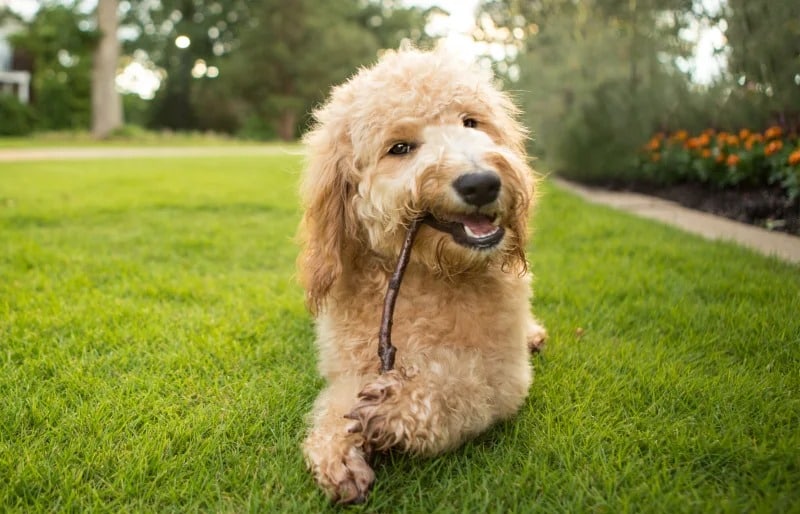
When Eating Sticks Is a Sign of Concern
If your dog is seeking out sticks to eat repeatedly or compulsively, it may be a sign of an underlying problem that needs to be dealt with.
- Anxiety: If your dog has gone through any new changes, they might be struggling with anxiety and could be chewing and eating sticks to self-soothe.
- Boredom: If your dog is left alone for long periods without anything to occupy them they may chew on and swallow things that they shouldn’t such as sticks.
- Malnutrition: If your dog’s body is lacking certain nutrients that they’re not getting from their food, they may try to eat sticks or other non-food objects to access these nutrients. It’s important to feed your dog good quality dog food that is age-appropriate so that they receive all the nutrients they need to thrive.
- Digestive issues: If your dog has digestive issues caused by things like worms, infections, or allergies, their body may not be able to absorb all the nutrients they need from their food. Your dog will need to be seen by a vet to determine what is wrong with them and to treat them accordingly.
- Other medical conditions: Anemia can cause dogs to seek out inedible objects to eat, while other health conditions increase a dog’s appetite in general. Increased hunger is also a side effect of some medications.
- Pica: This condition is defined as the persistent and repeated chewing and consumption of non-food items, such as sticks. Often there is an underlying behavioral problem but medical conditions, such as those causing nutritional deficiencies, need to be ruled out.
If you need to speak with a vet but can't get to one, head over to PangoVet. It's an online service where you can talk to a vet online and get the personalized advice you need for your pet — all at an affordable price!
Frequently Asked Questions (FAQ)
Are Sticks Safe to Eat?
No. There are risks to your dog eating sticks. Sticks are not digestible and can cause blockages in your dog’s digestive system. Some sticks have thorns, which can cut your dog’s mouth, while other sticks may have an insect hiding in it that can sting your dog when they pick it up.
Some sticks may splinter or break in half and hurt your dog. The bottom line is that sticks come in different shapes and sizes, which makes them unpredictable and a potential risk of harming your dog.
Some injuries that can occur when your dog plays with or eats sticks are:
- Choking
- Splinters going into your dog’s gums, tongue, and throat
- Poking into your dog’s eye
- Cuts from sharp points and thorns
- Bacterial infections
- Blockage in the intestines
- Poisoning from toxic plants
- Becoming lodged in the roof of your dog’s mouth
- Impaling your dog’s throat
Although some of these risks are minor, some are serious and life-threatening and may require emergency treatment and surgery.

What Are Some Alternatives to Sticks?
The truth is that your dog likely enjoys the act of chewing or the game of fetch more than the stick itself, which means that you can swap out a stick for something else without much of a struggle—something they will not ingest, of course!
If you’re playing with your dog and need something to throw, opt for a ball, rope, or fake stick toy. These alternatives won’t splinter, are non-toxic, and are designed specifically for dogs.
If you’re looking for a safer option for your dog to chew on because they’re teething, love to chew, or to help remove plaque, you can consider:
- Hard rubber toys
- Dental sticks
- Kongs
- Woven ropes
- Nylabones
Make sure the toys you buy for your dog are age and size-appropriate, as some toys for small breeds can be choking hazards for large breeds.
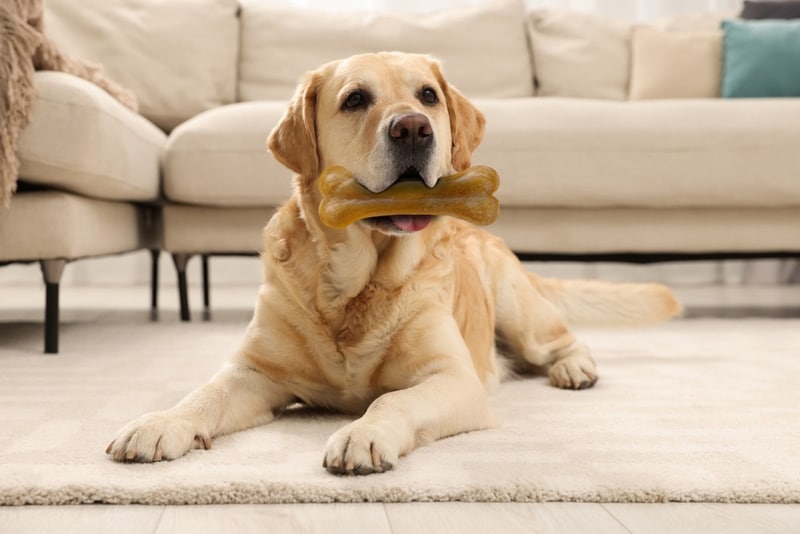

Conclusion
It’s a common behavior for dogs to chew sticks because they’re multi-sensory and can entertain your dog for a good period of time. Sometimes, dogs will eat sticks because they’re struggling with underlying issues such as boredom, anxiety, digestive issues, or a nutritional deficiency.
Unfortunately, both chewing and eating sticks come with serious risks. As well as being indigestible with the potential to cause intestinal obstructions, they can cut your dog’s mouth, become lodged in the roof of their mouth, and even impale their throat. If you want to avoid potential injuries, don’t introduce sticks to your dog when they’re young, and give them a variety of toys to play with so they don’t need to seek out their own entertainment.
See also:
- Akita Dog Breed Info
- What to Do If Your Dog Runs Away
- Why Do Dogs Eat Toilet Paper? Risks & Prevention Tips
Featured Image Credit: Lucie1985, Shutterstock
